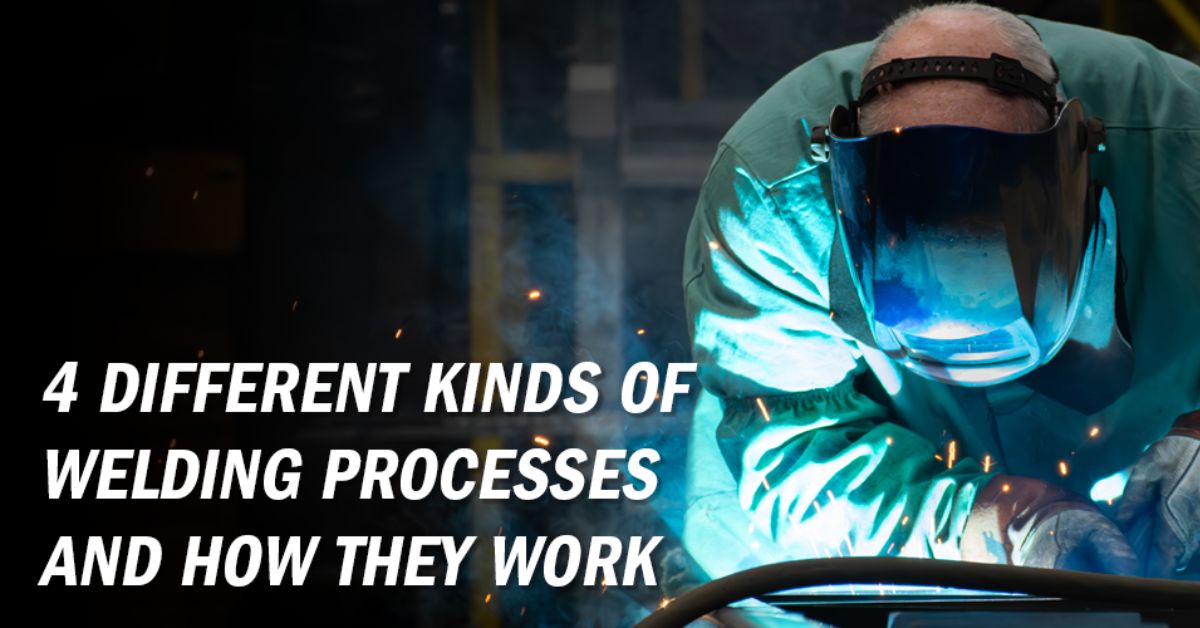Understanding 4 Key Welding Processes and Their Applications

Welding is when you join two or more pieces of metal by using heat, pressure, or both. Welding is really important in many industries, like construction, manufacturing, and cars. There are different ways to weld, and each has its own special features and uses. In this post, we’ll explain four main welding techniques and how they work.
1. Gas Metal Arc Welding (MIG)
Gas Metal Arc Welding (GMAW), also called Metal Inert Gas (MIG) welding, uses an electric arc between a wire electrode and the metal you're working on. Welders use a shielding gas, like argon or a mix of argon and carbon dioxide, to protect the weld from getting contaminated by the air.
Benefits of MIG Welding:
- Easy to learn, great for beginners.
- Works well for welding steel, stainless steel, copper, and aluminum.
- Makes clean, precise welds with little spatter.
MIG welding is popular because it is easy to use and works well for many kinds of metals. If you want a welding method that is fast and precise, MIG could be the best choice for you.
2. Gas Tungsten Arc Welding (TIG)
Gas Tungsten Arc Welding (GTAW), also called Tungsten Inert Gas (TIG) welding, uses a tungsten electrode that doesn’t melt. Instead, the tungsten makes an arc that heats up the metal and creates the weld. The weld is protected by an inert gas, usually argon.
Benefits of TIG Welding:
- Gives you a lot of control over the heat.
- Great for very precise or detailed welding jobs.
- Produces very clean and strong welds.
TIG welding is harder to learn but perfect for projects that need a lot of precision. It is often used for metals like stainless steel and aluminum.
3. Shielded Metal Arc Welding (Stick)
Shielded Metal Arc Welding (SMAW), also known as stick welding, uses a flux-coated electrode to melt the metal and form the weld. The electrode creates an electric arc that melts the coating and the base metal to make a weld pool.
Benefits of Stick Welding:
- Simple, portable, and affordable.
- Works well for outdoor projects or hard-to-reach places.
- Good for metals like steel, cast iron, and nickel alloys.
Stick welding is very versatile and is often used in construction and maintenance because it is simple and doesn't need a lot of equipment.
4. Submerged Arc Welding (SAW)
Submerged Arc Welding (SAW) uses an arc between a continuously fed electrode and the metal, all under a layer of granular flux. The arc is hidden, which keeps the weld clean and prevents sparks and spatter.
Benefits of Submerged Arc Welding:
- High welding speeds and deep welds.
- Very clean welds with little spatter.
- Perfect for thick materials, like those used in shipbuilding and heavy steel work.
SAW is very efficient and makes deep welds, which is why it’s used for heavy-duty projects in industries like shipbuilding.
Welding Positioners and Quality Welding Equipment
Knowing about the different welding techniques helps you pick the right tools for your projects, including welding positioners that make welding more efficient and precise. Each welding method has special advantages for different types of jobs.
Koike Aronson Inc. sells high-quality gas welding equipment and welding positioners to support many welding methods. With over 100 years of experience, we keep making new and better solutions for the welding industry. You can trust us to provide safe, efficient, and reliable welding equipment for all your projects.
Interested in learning more or buying welding equipment and welding positioners? Visit our store today to find the best tools for your project!
